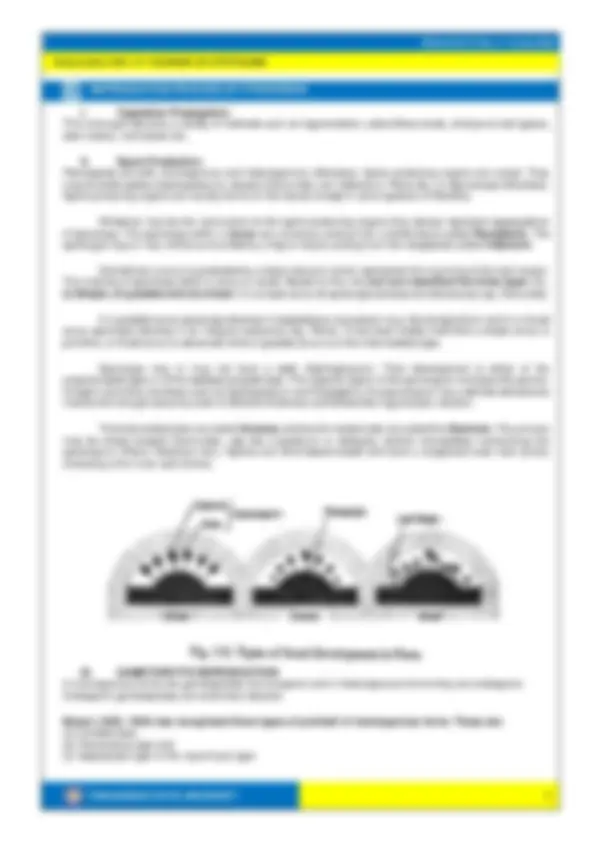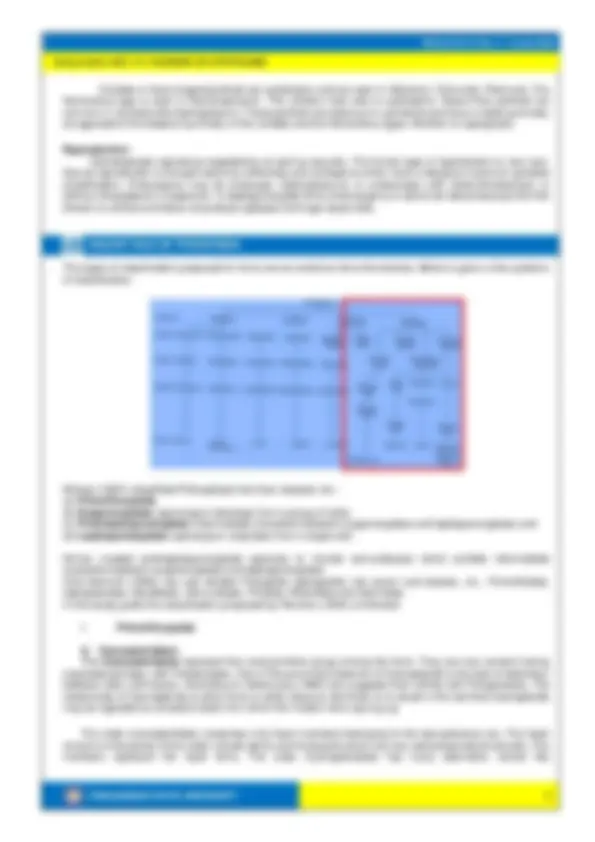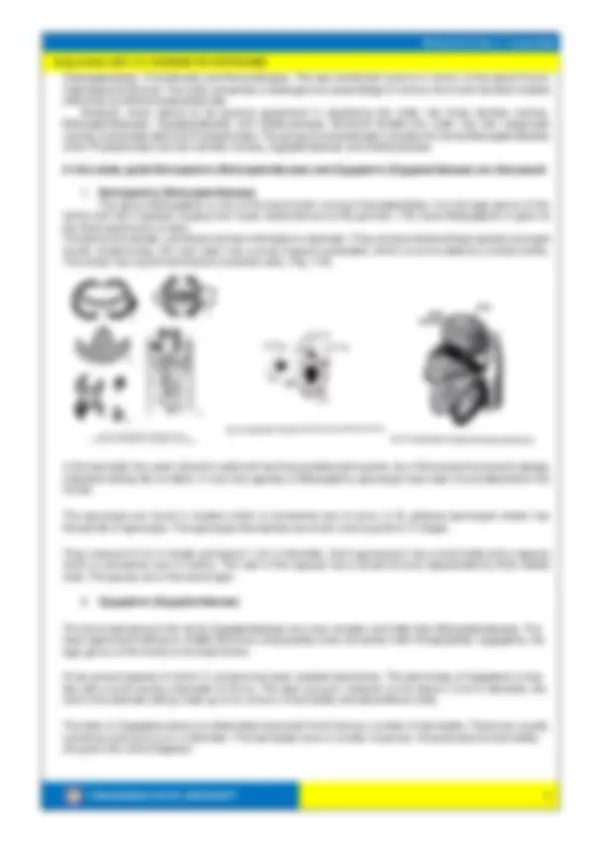





Study with the several resources on Docsity

Earn points by helping other students or get them with a premium plan


Prepare for your exams
Study with the several resources on Docsity

Earn points to download
Earn points by helping other students or get them with a premium plan
Community
Ask the community for help and clear up your study doubts
Discover the best universities in your country according to Docsity users
Free resources
Download our free guides on studying techniques, anxiety management strategies, and thesis advice from Docsity tutors
Here some slides/ lecture notes for the classification of Pteridophytes
Typology: Study notes
1 / 7

This page cannot be seen from the preview
Don't miss anything!




Study Guide in BIO 11 4 : TAXONOMY OF CRYPTOGAMS
Geologically ferns have been known since the carboniferous period. It is believed, however, that the group must have had its ancestors during the Devonian period itself. A unique feature of ferns is that their persistent basic characters are still sufficiently plastic to be receptive to the environmental fluctuations. Pteropsida are distinct from lycopsida and sphenopsida in several characters. Among the vegetative characters, the megaphyllous leaves with the attendant leaf gaps are most notable. Among the reproductive features, (though some primitive members show some sort of a semblance to the strobilar organisation seen in the previous groups), the aggregation of sporangia on the abaxial or adaxial surface of the leaf into sori is the most significant. LEARNING OUTCOMES At the end of this Module, you should be able to:
Study Guide in BIO 11 4 : TAXONOMY OF CRYPTOGAMS MORPHOLOGY AND PHYSIOLOGY OF PTEROPSIDA I. Plant Body of Pteropsida (Ferns): A. Stem: The sporophyte has an underground rhizomatous stem which may be elongated or tuberous. The branching of the rhizome may or may not be dichotomous. In some cases the rhizome is covered by hairs called ‘ramenta’. B. Leaves: The leaves are compound and once or twice pinnate. They are megaphyllous, having a dichotomous or reticulate type of venation. The size of the leaves varies from few centimeters to several metres (Angiopleris). Usually only the leaves are aerial while the rest of the plant body is subterranean. Some ferns show circinate vernation in the leaves i.e., the young growing parts are coiled inwards and uncoil as they grow. C. Roots: Like in other pteridophytes, roots are always adventitious. D. Trophopod: Wagner and Johnson (1983) have reported a special food storing organ trophopod in a number of ferns such as Asplenium, Platyneuron, Onoclea spp, Dryopteris fragran s etc. According to them the trophopod which is generally over looked in fern description is an organ which is of potential systematic value. II. Internal Structure A. Rhizome: Stelar organisation varies from protostele, solenostele to polycyclic, dictyostels (Pteris). Cortex may be wholly parenchymatous (Ophioglossm) or may be distinguished into outer sclerenchymatous zone and inner parenchymatous zone. Sometimes muclilage ducts are found in the cortex as in Angiopteris. Xylem has mostly tracheids, but vessels are also reported in Pteris, Marsilea etc. Secondary growth is absent except in Botrychium. B. Root: The stele is usually protostelic with variations in xylem groupings. The xylem is exarch and may be mono-di tri or even tetrarch. Root cortex may be homogenous of heterogenous. C. Petiole: The leaves maybe provided with single leaf trace or the trace may be dissected into several meristeles. D. Lamina: The upper and lower epidermal layers enclose the mesophyll which may or may not be differentiated. Distinction of palisade and spongy parenchyma in the mesophyll is seen in Cheilanthes, Pyrrosia etc. Lamina may be hypostomatic or amphistomatic.
Study Guide in BIO 11 4 : TAXONOMY OF CRYPTOGAMS Cordate or heart shaped prothalli are autotrophic and are seen in Adiantum, Osmunda, Pteris etc. The filamentous type is seen in Hymenophyllum. The nutrition here also is autotrophic. Mycorrhizic prothalli are common in members like Ophioglossum. These prothalli are tuberous or cylindrical and have a radial symmetry as opposed to the bilateral symmetry of the cordate and the filamentous types. Nutrition is saprophytic. Reproduction : Gametophytes reproduce vegetatively as well as sexually. The former type of reproduction is very rare. Sexual reproduction is brought about by antheridia and archegonia which have undergone maximum possible simplification. Embryogeny may be exoscopic (Ophioglossum) or endoscropic with (Helminthostachys) or without (Angiopteris) a suspensor. In leptosporangiate ferns embroyogeny is said to be lateral because the first division is vertical and does not produce epibasal and hypo basal cells. MAJOR TAXA OF PTEROPSIDA The types of classification proposed for ferns are as varied as ferns themselves. Below is given a few systems of classification. Hirmer (1927) classified Fillicophyta into four classes viz.: (a) Primofilicopsida (b) Eusporangiatae (sporangium develops from a group of cells) (c) Protoleptosporangiatae (intermediate characters between eusporangiatae and leptosporangiatae) and (d) Leptosporangiatae (sporangium originates from a single cell) Hirmer created protoleptosporangiatae specially to include osmundaceae which exhibits intermediate characters between eusporangiatae and leptosporangiatae. Pichi-Sermolli (1959) has sub divided Filicopsida (pteropsida) into seven sub-classes, viz., Primofilicidae, Ophiglossidae, Marattidae, Osmundiade, Filicidae, Marsilidae and Salvinidae. In this study guide the classification proposed by Reimers (1954) is followed. I. Primofilicopsida A. Coenopteridales : The Coenopteridales represent the most primitive group among the ferns. They are very ancient having originated perhaps, with Psilophytales. One of the prominent features of Coenopterids is the lack of distinction between stem and leaves. According to Delevoryas (1962) this suggests their affinity with Psilophytales. The relationship of Coenopterids to other ferns is rather obscure. But there is no doubt in the fact that Coenopterids may be regarded as ancestral stock from which the modem ferns sprung up. The order coenoptaridales comprises only fossil members belonging to the late paleozoic ara. The fossil remains of the plants of this order include stems and frond parts which are very well preserved structurally. The members represent the fossil ferns. The order Coenopteridales has many alternative names like
Study Guide in BIO 11 4 : TAXONOMY OF CRYPTOGAMS Palaeopteridales, Primofilicales and Renaultificales. The last mentioned name is in honour of the great French Paleobotanist Renault. The order comprises a heterogenous assemblage of various ferns and has been treated differently by different paleobotanists. However, there seems to be general agreement in classifying the order into three families namely, Botryopteridacease, Zygopteridaceae and Cladoxylaceae. Burtrand divided the order into two subgroups namely Inversicatenales and Phyllophorales. The group Inversicatenales includes the family Botryopteridaceae while Phyllophorales has two families namely, Zygopteridaceae and Cladoxylaceae. In this study guide Botryopteris (Botryopteridaceae) and Zygopteris (Zygopteridaceae) are discussed:
1. Botryopteris (Botryopteridaceae) The genus Botryopteris is one of the best known among Coenopteridales. It is the type genus of the family and has 5 species ranging from lower carboniferous to the permian. The name Botryopteris is given to the fossil specimens of stem. The stems are slender, cylindrical and few millimeters in diameter. They are branched and bear spirally arranged fronds. Anatomically, the main stem has a small mesarch protostele, which is surrounded by a broad cortex. The cortex has a prominent band of sclerotic cells. (Fig. 114). In the leaf stalk, the xylem strand is solid and has three prototoxylem points. As in B.forensis the strand is deeply indented looking like a trident. In very few species of Botryopteris, sporangia have been found attached to the fronds. The sporangia are found in clusters which is somewhat rare to ferns. In B. globosa sporangial cluster has thousands of sporangia. The sporangia themselves are small, oval to pyriform in shape. They measure 2 mm in length and about 1 mm in diameter. Each sporangium has a short stalk and a capsule which is somewhat oval in outline. The wall of the capsule has a broad annulus represented by thick walled cells. The spores are of the same type. 2. Zygopteris (Zygopteridaceae) The ferns belonging to the family Zygopteridaceae are more complex and older then Botryopteridaceae. The fossil specimens belong to middle Devonian and possibly have connection with Psilophytales. Zygopteris, the type genus of the family is the best known. It has several species of which Z. primaria has been studied extensively. The plant body of Zygopteris is tree like with a trunk having a diameter of 20 cm. The stem as such, however is only about 1.5 cm in diameter, the rest of the diameter being made up of an armour of leaf stalks and adventitious roots. The stem of Zygopteris bears an elaborately branched frond having a number of leaf stalks. These are usually cylindrical and up to 2 cm in diameter. The leaf stalks have a number of pinnae. Occasionally the leaf stalks are given the name Etapteris.
Study Guide in BIO 11 4 : TAXONOMY OF CRYPTOGAMS IMPORTANCE OF PTEROPSIDA A. Adiantum Adiantum is a common fern. It is found in the plains. It grows in shady places. It is found on moist walls or rocky places. The common specie of this genus is Adiantum Capillus-Veneris. Rhizome is closely covered by scales called palea. Each leaflet is green and triangular. It has broader end towards the apex. The stele in the rhizome is dictyostetic. The sporangia are borne on the underside of the reflected lobes of pinnae. The reflexed lobe of the leaf forms a covering or false indusium over sori. The groups of sporangia are called sori (sing sorous). Each sporangium has a stalk. The sporangia are sub- globose or ovate in outline. The wall of each sporangium is formed of a single layer of cells.